I lived my young life on a short leash. Adults were in charge and I listened. I got in line. I watched the world with wide eyes and observed and tried not to get in anyone’s way. In my 20s and 30s however, I cut that leash. I rebelled. The pendulum swung. I lived loose. No leash at all. It mostly didn’t serve me well. Today I try to do better at balancing both. A self-prescribed freedom, a willingness to occasionally fall in line because sometimes it’s objectively better. I use an alternative to a leash: self control, and self understanding.
I know I’m going to get a lot of pushback from this one but that’s ok. Discourse is good. Let’s be cordial. And remember how fast you drive on the highway. Out here, at least, people usually do about 10 over the limit. It’s a bylaw enforced for our own safety. But we push it a little bit. Not because we want to be unsafe, but because we trust ourselves. But don’t get hung up on this metaphor.
Metaphors aside, I want to talk about literal dog leashes. Recently, my favourite trail in Vancouver announced it would implement blanket leash laws after being mostly off-leash for decades. Trails that I used to walk every day with Momo and Boo and still visit often with Yaya and Boo. I expressed my frustration with this announcement and was met with equal parts “this makes no sense” and “this makes perfect sense.” This is a heated topic. It heats me up, too. Luckily, I live in a small town now, so it’s easy to have a walk without seeing another soul. But when I return to the city, I’ll probably use these trails as I always have: off-leash.
You may not agree, you may not care, but
if you are holding this book you should know
that of all the sights I love in this world -
and there are plenty - very near the top of
the list is this one: dogs without leashes.– Mary Oliver
My problem with leash bylaws is multifaceted. One problem is that Vancouver doesn’t have enough off-leash areas to begin with. Another issue is societal. My theory (and feel free to weigh in) is that confining dogs to leashes using blanket leash laws (trying to control nature) will only limit the amount of untethered socializing that is crucial to their psychological and physiological wellbeing. Leashing dogs, constraining them, is a large scale unregulated emotion that, if left unregulated, will just explode in outbursts of frustration and tantrums. Poorer behaviour will likely ensue. Watching dogs in Europe was an eye opening experience. There were some places that didn’t allow dogs, but overall it was so much more welcoming than much of North America when I was there with Momo.
As much as I think dogs should exist here as they do in much of Europe, they don’t. And I totally understand the counter arguments. Some dog owners suck, and our culture just isn’t there yet (and may never be). Honestly, I used to suck as a dog owner in these situations. In my rebellious days (and more recently than I’d like to admit), I’m embarrassed to say that I felt entitled to let my dogs roam free without consequence. Momo wasn’t much of a concern, he was rarely on a leash. He’d submit pretty easily to aggressive dogs and wouldn’t instigate or even bother interacting with other dogs. Off-leash Momo was easy. Off-leash Yaya and Boo is a different story. Yaya, my 60 pound border collie, sometimes jumps on people (he’s almost over this phase, I can feel it). Boo can be reactive, but I’ve mostly curbed it by learning his cues and avoiding them altogether. Sometimes, it’s a messy situation, but I’ve learned a lot and continue to learn how to better manage my dogs and not interrupt other people who wish to not be interrupted.
Yesterday the dogs ran up to a woman walking alone on the beach and I held my breath. I had to choose between yelling at them to get them back (I could have done this), and letting the situation unfold. I feared the worst, but trusted the moment. I imagined this woman yelling at me to get the dogs on a leash. Both dogs approached her, gave her a lot of love, which she seemed to return to them. Yaya gave a jump but it wasn’t too high. I called the dogs back and just as we started walking away, the woman said: “Thank you for that. I just lost my dog. That really helped me.”
The reason I don’t write about dog training is because I’m not a great dog trainer. But I understand my dogs. And that’s enough. That’s all you need: to know your dog. I know mine very well. And I may be able to offer some advice for people who decide to take their dogs off leash. And look, I’ve been on plenty of leash-required trails where people have their dogs off leash. Let’s not pretend this doesn’t or won’t happen. In certain scenarios, the leash bylaw was implemented because something happened once, to avoid liability, or both. But mostly, these trails are alive with good people with obedient roaming dogs. If we called out well trained dogs as loudly as we called out poorly trained dogs, we’d see just how many good dog people there are out there.
I know I’m going to get flack for this, but I don’t mind. My dogs are big energy dogs. They need to run. Actually, it’s much easier to manage them off-leash than on-leash. The trail near my house is an on-leash trail, but rarely do I see other people there, though luckily I live in a rural area. I think the question is not whether your dog is on a rope, but whether your dog is in your control. If you happen to come across another human or dog, you should have control over your dog, whether it’s by leash or by voice commands. Air on the side of caution: unless a person approaches you or your dogs, walk past them without interaction. Each instance needs to be evaluated as it unfolds, and your full attention is required.
Guide to walking your dog off-leash where you aren’t technically allowed to walk them off-leash but as a competent person can reasonably assess the trail as being relatively safe for off-leash exercise, potentially:
1. Avoid busy trails.
If the trail you want to go to is packed with people, don’t go. A good way to avoid this is to:
2. Avoid peak hours.
Weekends and early evenings are usually the busiest. Weekday mornings and sometimes afternoons are quieter. Rainy day? Perfect! Less people will be on the trails. But get to know your trail, and learn to go when it’s quietest.
3. Practice recall, a lot.
This comes back to knowing your dog. But practice often. I randomly call Yaya & Boo back to me when no one is around to make sure I’m reinforcing their recall skills. Sometimes a whistle will be enough. Sometimes I need to dramatize an entire scenario or interpretive dance or make chicken noises. But if I commit to calling them, I have to follow through until they are next to me and hear my “good boyyyyys!”. No exceptions.
4. Always look ahead.
Sometimes my stupid phone catches my stupid attention and ends up in my stupid hand when I’m walking the dogs. Not good. This is when another person decides to materialize out of nowhere. Keep your full focus on the trail and practice looking ahead as far as you can. If you see someone coming, assess the situation. Usually if it’s another person with an off leash dogs, I’ll control the situation as best as I can. Yaya and Boo are best to meet other dogs individually, so I’ll keep Yaya’s attention with a stick or a “sit!” and tell Boo “go say hi Boo!”. He’ll go say hi, and once he’s said hi I’ll release Yaya’s attention and capture Boo’s attention. It’s a bit of a shuffle but it really has proven successful. The more wins we have, the better they’ll learn that meeting other dogs is an uneventful occasion. Just like we want it to be.
5. Practice “stay back”.
This is one of the best tricks they’ve learned. When I say “stay back”, they’ll wait for me to pass them (assuming they’re ahead), and follow behind me without passing me. It’s extremely useful for narrow or winding trails, steep ascents or descents, or when I’m running and can’t give them my full focus but also don’t want to trip on a leash.
6. Practice an emergency recall.
“Come!” isn’t always the best word for my dogs. Sometimes it works, but sometimes it seems like they’re ignoring me. My voice projects, which is a really useful tool, so I can give them a “come NOW!”, which will usually work. BUT! If it doesn’t, these words get their immediate attention: “stick!”, which means stick. “Drop!” which makes Boo think that Yaya just dropped a stick and Boo is coming to investigate, or “Ready?!”. I say “Ready?!” whenever I’m about to throw a stick for them, which means they think I’m gonna do this (so whenever I do it, I try to grab a stick or even a twig to reinforce the habit). This is what I mean by “know your dog”. I know they love sticks. So I use this to my advantage whenever I need their attention.
Oh, and also I can whistle really loud and that usually works too.
7. Try on-leash.
Counter-intuitive to the topic, but once in a while, if I know my focus isn’t available, if the trail is busier than I thought it would be, or if I just want to practice leash training them, I put them on leash. I prefer using positive affirmations over treats, as I don’t always have treats on me and positive affirmations are free. When practicing having them on leash, I’ll practice my own patience too. I’ll have them sit and wait for other dogs to pass, and all that stuff you can do easily with a leash. Make it a fun experience with or without treats.
8. Trust them.
Once in a while, I’ll see an off leash dog approaching, the trail will be wide, and the person will be smiling. If this really feels like a safe situation, I let the dogs go say hi. I have to trust them sometimes. I have to give them an opportunity to learn. Occasionally this doesn’t work, in which case I’ll intervene, but for the most part, they’ll have a good experience and even a good play. A win for socializing that wouldn’t be possible on a leash.
9. Avoid environmentally sensitive areas.
It’s important to be cognizant of areas that are environmentally sensitive. Usually they’re marked as such. But when in doubt, don’t let dogs romp off trail.
10. Skip the niceties.
As a person with social anxiety and a people pleaser, this is tough. But I had to learn that sometimes it’s best to not say hello to people passing by so that I’m sure I have my dog’s full attention. I noticed they were taking advantage when I talked with other people, they’d use it as an excuse to run ahead and they’ll interject their unsolicited opinions into the conversation I’m having, which are usually pretty off-topic and honestly kind of rude. So I just ignore other people entirely (gulp). I’m sorry if I’ve ignored you on a trail. Now you know it’s for the greater good.
11. Stay connected to the walk.
I said it before and I’ll say it again, leave your phone in your pocket. I need to tell this to myself often, too. And if you’re walking with friends, keep as much focus as possible on the walk. Let it heal you. Nature is literally healing.
12. Ask your municipality to do better.
For the municipalities, there could be alternative solutions. Bylaws are basically negative reinforcements: if you don’t obey you will be reprimanded or punished. We don’t use this sort of training on dogs for a reason. Instead of overarching leash laws, there are many alternative solutions that meet somewhere in the middle and can foster healthier dogs and happier communities.
Boulder, CO’s Voice & Sight Tag Program – Off-leash access is granted on specific trails if owners complete an education course and obtain a permit. Only dogs with strong voice control qualify, helping reduce trail conflicts while maintaining off-leash freedom.
Brookline, MA’s Green Dog Program: Designates off-leash hours in 14 parks (typically mornings and some afternoons). Running for over a decade, it effectively balances dog recreation with other park uses through a permit system.
Boise, ID’s Seasonal Off-Leash Fields – Large athletic fields, like Ann Morrison Park, become off-leash zones from November to February, maximizing parkland use in winter while keeping sports fields dog-free in summer.
Ok, that’s all. Have any other tips? Do you disagree entirely? Be nice, ok? Take a deep breath. I will too.
Love u,
Andrew


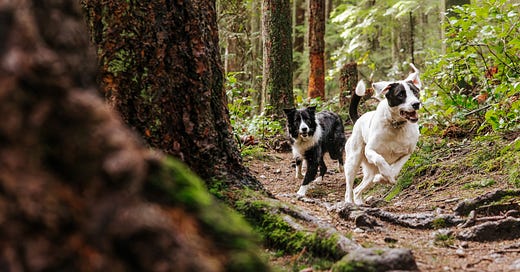


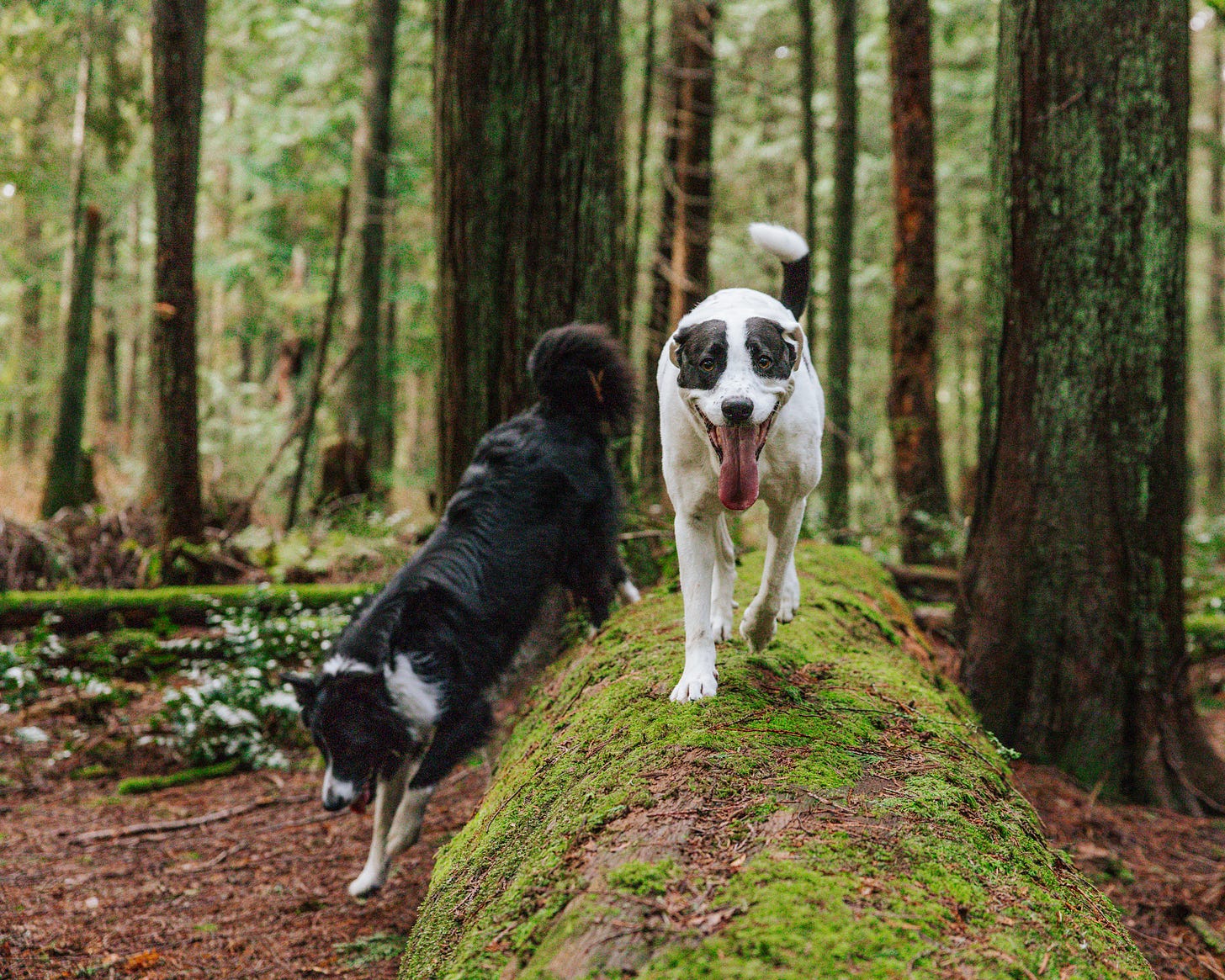
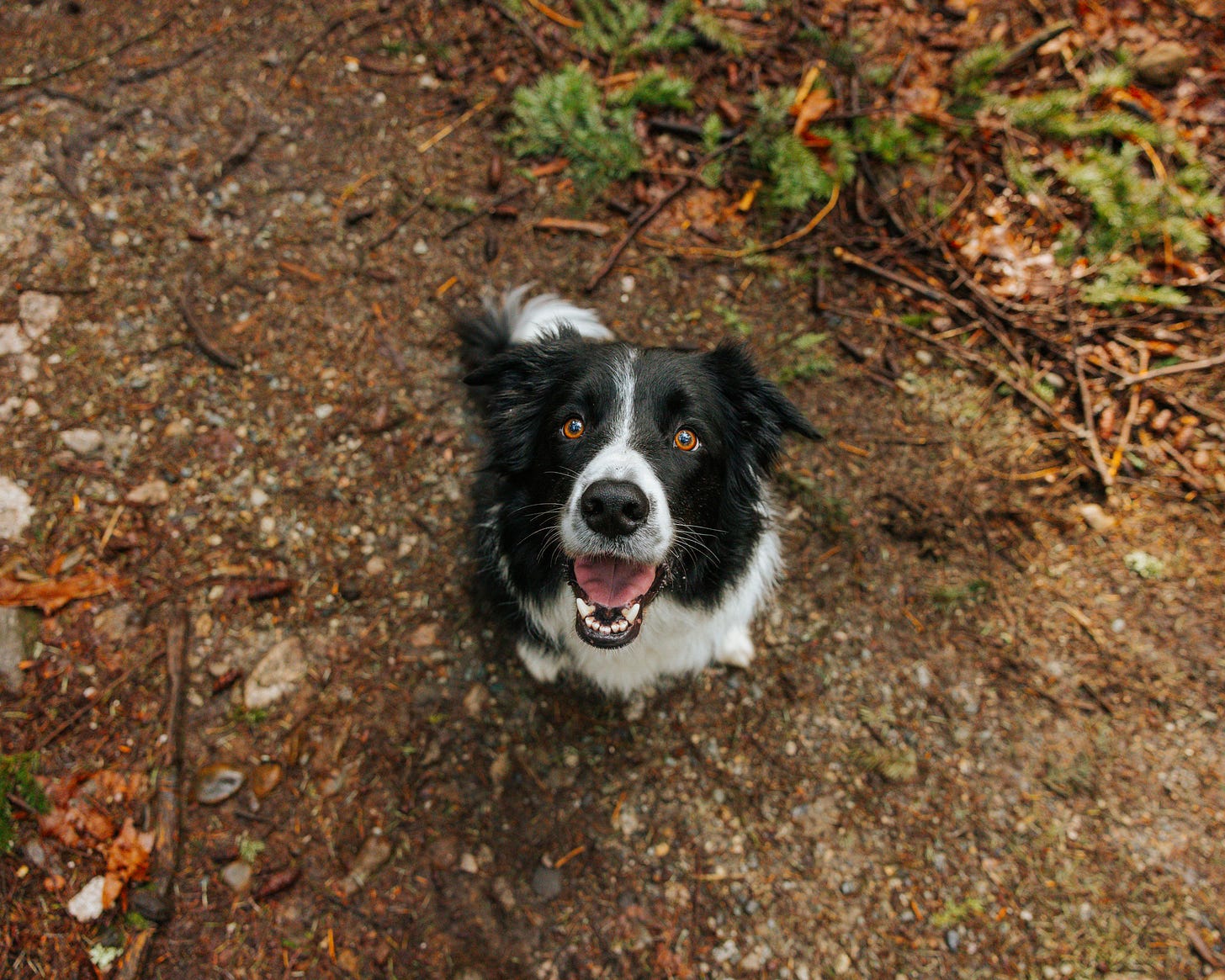
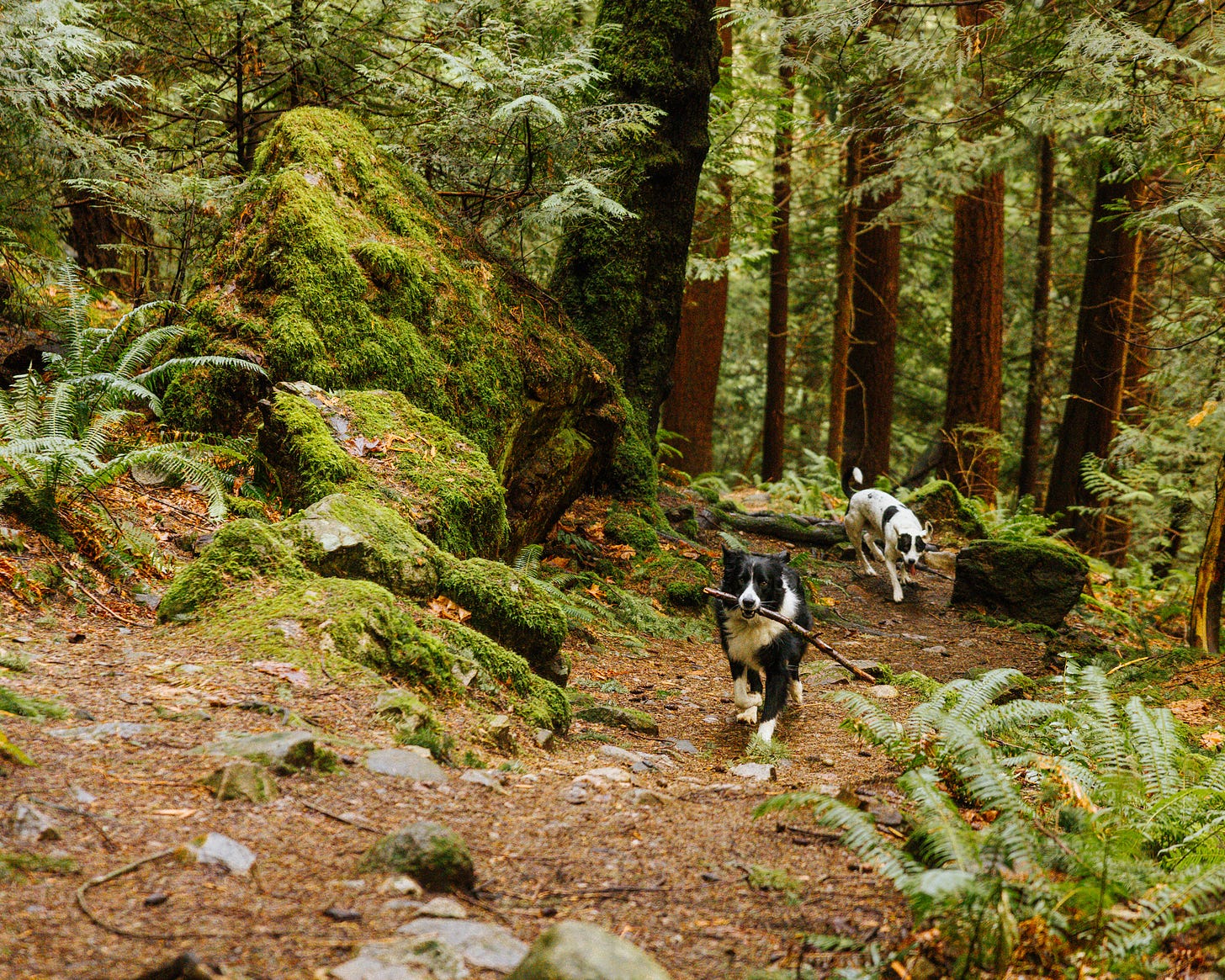
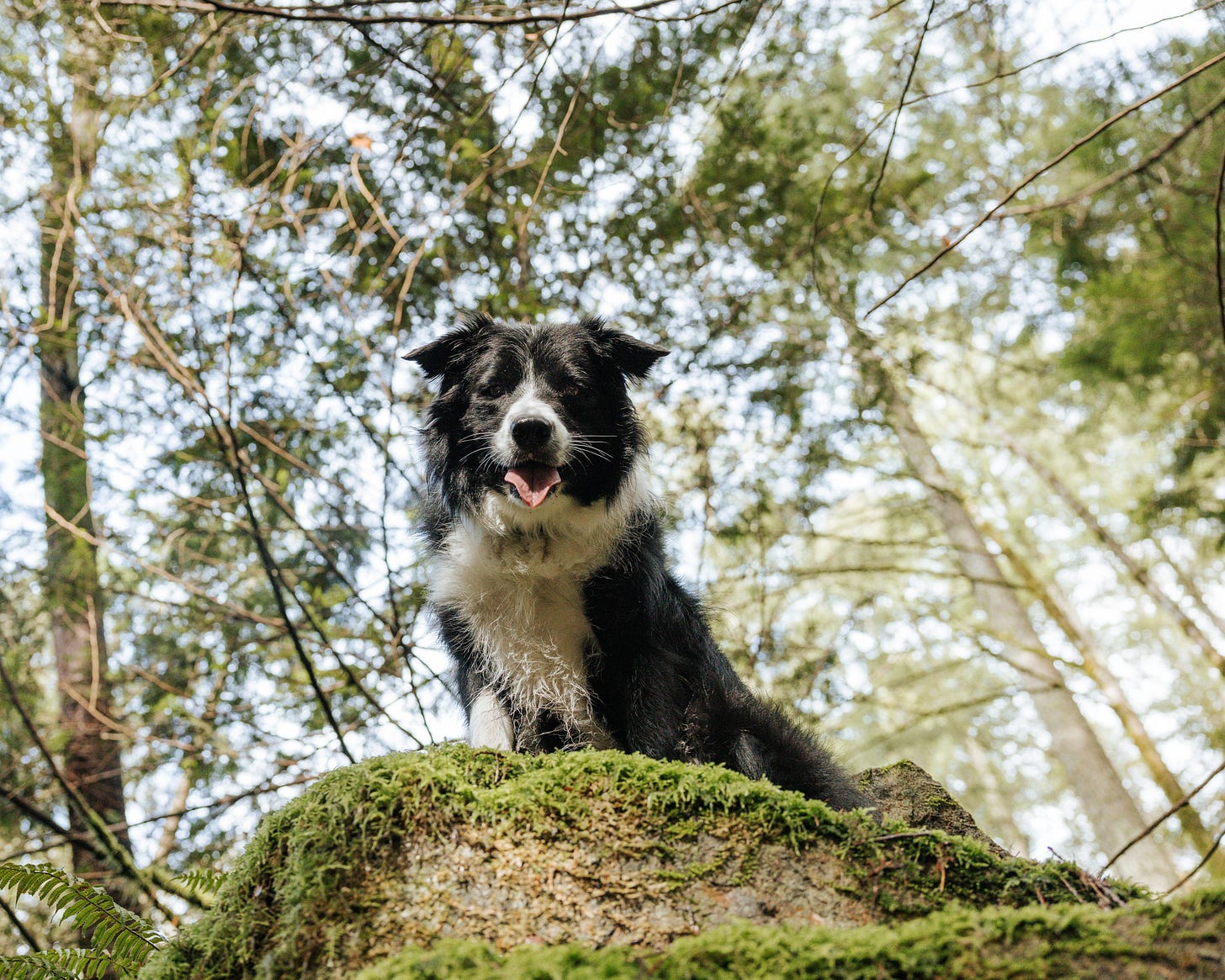
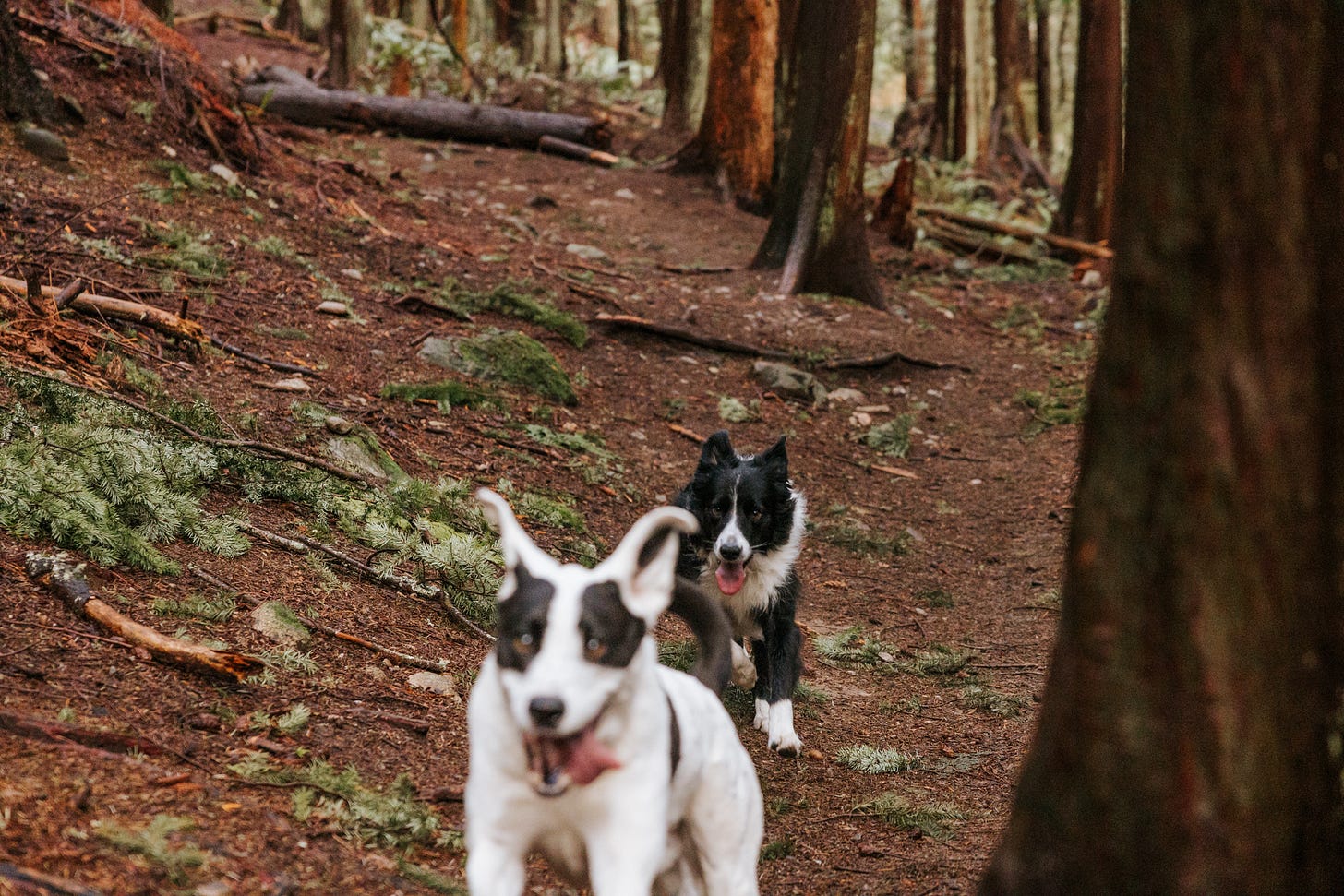

I hear your perspective but as a dog owner who used to have a reactive dog, we only went to on-leash areas so we could trust that no dog would run up to her. Obviously there were always people with dogs off leash and people who still let their dogs come too close, but those were frustrating.
I guess if you know your dog won’t approach another dog without your permission, it seems ok. However, in my experience that is rarely the case and as an owner who was doing their best to be mindful of their dog’s needs, having other not obey leash laws was incredibly frustrating and resulted in us having to avoid certain areas that we should have been able to access.
Thank you for your post! Great pictures too. “Control” is the key point here. The problem of course is the people who don’t have any and excuse their dog’s rudeness with a “he’s friendly exclamation”. My husband is too but few people in the park want him running up to them, hugging them, and to receive an invasive investigation! Bizarre I know, but there are people who don’t like dogs or are scared of them, plenty of dogs have issues with other dogs - often because of bad incidents in the past (on or off leash). Senior dogs or injured dogs deserve to be free of harassment. We’re all entitled to a peaceful walk. Those of us who don’t want to be disturbed shouldn’t have to put up with other people’s rudeness. That said, I can’t control their actions. Too often leash laws are flagrantly ignored. No one backs them up. If I know that, I can set both myself and my dog up for success and walk elsewhere. No, I shouldn’t have to, but the reality of society is that some people follow rules and others don’t. But that of course is a whole other issue!